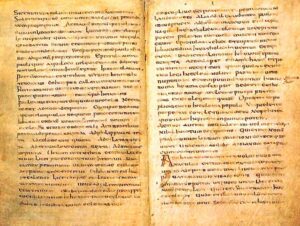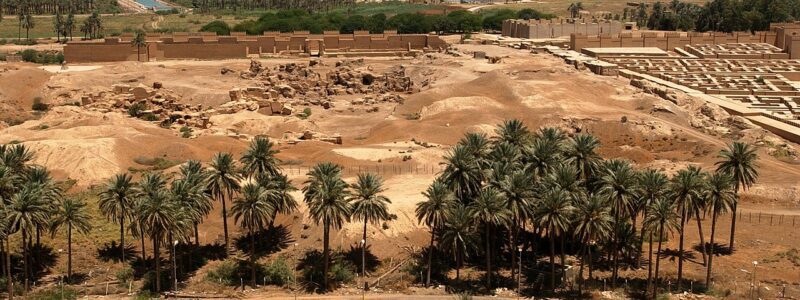The New Testament Books
There are twenty-six books in the New Testament that we consider to be an authoritative and accurate representation of events that occurred many hundreds of years ago.
Many skeptics point out that the books in the New Testament were written about 325 years before being incorporated into a “canon” or official group of books recognized by the Church. But how do we know these books were not just “made up” or altered during the intervening centuries? And why these books, and not others that were known at the time? This is a crucial question because it speaks to the historicity of the New Testament, the Truth of the Christian doctrine contained within these documents, and why we can believe they represent the Word of God.
Chain of Custody
Sam Harris, one of the “New Atheists,” posits there is no good reason to believe in the authenticity of the New Testament. He notes,
How do we know that our holy books are free from error? Because the books themselves say so. Epistemological black holes of this sort are fast draining the light from our world.

There is a chain of custody of information between the apostles and the first Bible.
Harris is right that the New Testament proclaims all Scripture as being “God-breathed,” but is that the only evidence we have for its authenticity? This would seem to be a rather circular argument, “it’s true because it says it’s true.” This would be a poor representation of the vast amount of information we have about the development of the New Testament, why certain books were chosen while others were not, and why we can be confident about the historicity of the information and events discussed within them.
The problem we face is that no original documents of any New Testament books exist. The oldest complete copy of the New Testament is the Codex Sinaiticus. This copy was discovered in the Monastery of Saint Catherine. It was published in the nineteenth century, and most scholars believe it is from 350 AD. It is written in Greek and contains the oldest complete copy of the New Testament. Parts of the codes are scattered in four worldwide libraries, with the majority being in the British Library in London, where it is on public display.
The New Testament is written in scriptio continua (without spaces between words). This is a hand-writing style called “biblical uncial.” The codex could not have been written before 325 AD as they contain the Eusebian sections. The Eusebian section is a system of dividing the four gospels in late antiquity.
Fifty Bibles of Constantine
Scholars theorize that the Codex Sinaiticus was one of the fifty copies of Scripture commissioned from Eusebius by the Roman emperor Constantine in 331 after his conversion to Christianity. Eusebius quoted the letter of commission in the life of Constantine. There are now only two surviving Bibles out of those fifty – the Codex Sinaiticus and the Codex Vaticanus.
Some speculate these two ancient Bibles are not part of the fifty Bibles due to differences in how they were made. Others note that likely the Sinaiticus version is at least fifty years older. The Sinaiticus version may represent the first attempt to produce a collection of all the canonical works in one Bible.
Preservation of New Testament Books

By Unknown author – http://www.neverthirsty.org/pp/bible-questions/answer01099-what-is-the-muratorian-fragment.html, Public Domain, Link
The original witnesses of the gospel events, including the Resurrection of Christ, may have written their observations on parchment. However, none of these original manuscripts have survived to the current day.
While we do not have their original manuscripts, we have what the original witnesses told their students. We now have to manufacture a “chain of custody” of these witnessed events from the original eyewitnesses to the oldest Bible, written about 350 AD.
The apostles all claimed to have seen the Resurrected Christ – that is the meaning of being an “apostle.” The apostles were interested in passing down their witness to students, who would then pass that message to other students, etc. This would continue until, finally, the first Bible was produced.
Not every student of every apostle would become an intellectual giant of the faith – but many would. These students preserved the apostolic witnessed and what was written in the gospels. Interestingly, if every Bible worldwide were to be somehow lost, nearly the entire Scripture could be reconstituted from what these students have written.
Is This the Telephone Game?

The telephone game suggests repetition will corrupt a message.
Skeptics counter that this is merely an exercise of the telephone game. This game is usually played at social events when a line of participants repeats what the messenger next to them whispers in their ear. The messenger at the end of the line will then say out loud what they heard as the last message. Usually, the message has become corrupted by the end of the line, inadvertently altered multiple times by the intervening messengers.
Skeptics argue that just as in the telephone game, these messages originally told to an apostolic student could become very corrupted by the time the first Bible was written.
The difference, of course, is that the gospel is not a “game” to these students. Students would memorize the entire Old Testament. They would then go on to memorize the content of what their teachers taught and commentary by Jewish sages throughout history. Memorization was part of life when parchment paper was available but expensive and degraded quickly in wet environments outside of Egypt and the desert regions of Israel.
Finally, multiple apostles were teaching their students the events contained within the gospels. Any significant deviation among these students would quickly become apparent as they wrote their own history of Christianity and offered defenses against heretics. It is from these writing which profusely quoted Scripture, that nearly the entire Bible could be reconstituted.
Summary
The historicity of Scripture is one of the best-documented facts in antiquity. Secular history documents how this ragtag group of illiterate peasants was scared of their own shadow. After the crucifixion, they hid behind locked doors, afraid they might be arrested and likely executed by the Jewish hierarchy.
After the Resurrection, this group would speak fearlessly about what they had seen – the resurrected Christ. They would then go throughout the world and face relentless persecution and frequently martyrdom to preach what they had seen.
But much more importantly, they would make thousands upon thousands of disciples. These disciples would also spread the gospel of love, a new way of life, and hope for eternal life. Many of these peasants would watch as their children were eaten by lions shortly before they met the same fate.
Something striking happened to make all this possible. We will next develop the lineage of students from the apostle John to 325, when the first Bible was written. We can have confidence that what is written in the Bible – especially concerning the Resurrection – represents historical fact and not just a made-up tale by ancient Jews.




